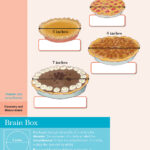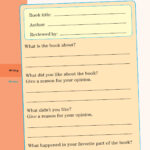 Alright, so maybe you won’t cook quite like Thomas Keller right off the bat. But Ad Hoc at Home, Keller’s latest cookbook, has the tips and recipes to get you cooking, if not on his level, then certainly with greater know-how and confidence than before. Even with limited experience in the kitchen, these are meals you can envision making. To become a well-rounded cook, one that can tackle almost any recipe, here are a few basics you might want to get the hang of….
Alright, so maybe you won’t cook quite like Thomas Keller right off the bat. But Ad Hoc at Home, Keller’s latest cookbook, has the tips and recipes to get you cooking, if not on his level, then certainly with greater know-how and confidence than before. Even with limited experience in the kitchen, these are meals you can envision making. To become a well-rounded cook, one that can tackle almost any recipe, here are a few basics you might want to get the hang of….
Learn to:
Use salt properly: Salt enhances flavors already in a dish – if you can taste the salt, it’s too salty. Salt used for seasoning needs time to dissolve—salt steaks, chops and other smaller cuts 15 to 20 minutes before cooking, while larger cuts, like a chicken, should be salted 40 to 45 minutes before cooking.
Use vinegar as a seasoning device: Vinegar can be an important way to enhance the impact of a dish. It’s always worth considering whether a few drops of vinegar could be added to a soup, sauce, or braising liquid to make the flavors really jump out.
Roast a chicken: When you know how to roast a chicken you have an infinite number of dishes at your fingertips, from springtime chicken with peas and morels to cold salads in the summer to a winterized version with roasted root vegetables.
Sauté: Recognizing the level of heat you need is the critical part of sautéing food. A duck breast should be cooked over low heat to render the fat in the skin and make it crisp, while fish is usually sautéed over high heat to develop flavor on the exterior through browning.
Pan-Roast: This combines two techniques, sautéing and roasting. It’s a good technique to use at home and only requires a frying pan or sauté pan with an ovenproof handle.
Make a pie crust: Baking your own pie crust gives you the framework to make a range of dishes. It also allows you to choose the type of fat you want to use as your shortening—butter adds richness, while lard can be great for savory dishes.
Cook eggs: Eggs can be prepared in so many ways – they’re delicious, inexpensive and nutritious. They can be used in sweet or savory meals as an ingredient or a tool.
Use the big-pot blanching technique: Big-pot blanching involves boiling vegetables in brine strength salted water until they are cooked through. The result? Vividly colored, perfectly seasoned vegetables.
Roast: There are two types of roasting: high-heat roasting and low-and-slow roasting. High-heat is used for foods that are naturally tender, like chicken or rack of lamb. Low-and-slow is used for either of two reasons: it can be used for meats that need to be tenderized or for large cuts that need to time to cook evenly.
Make one really good soup: There’s enormous value in making a good soup. A vegetable soup, a protein-based soup, and a pureed soup are all an invaluable part of a cook’s repertoire.
Poach: Poaching is a gentle form of cooking—the temperature never goes above 200˚F. Poaching allows you to flavor the cooking medium and thereby enhance the flavor of what you’re cooking.
Braise: Braising has the ability to develop deep flavor and tenderness in inexpensive, tough cuts of meat. Braising is straightforward: the meat is seasoned and browned on the stovetop, then liquid is added and the meat is cooked in the oven at 275˚ to 300˚ for hours until it’s tender.





No Comments